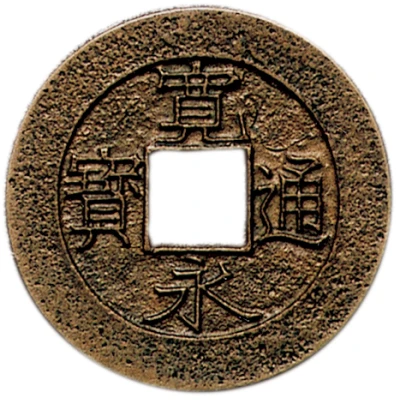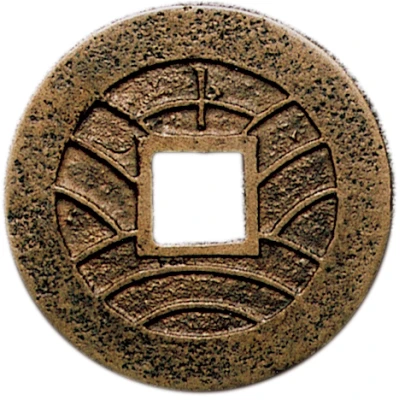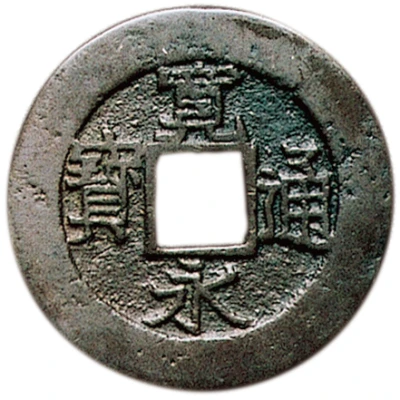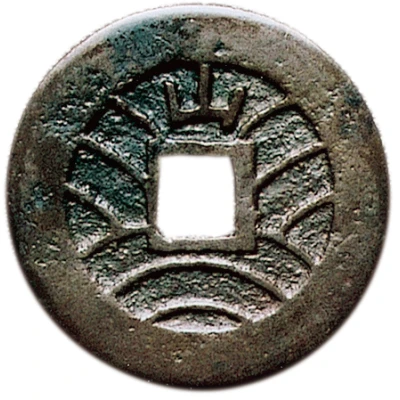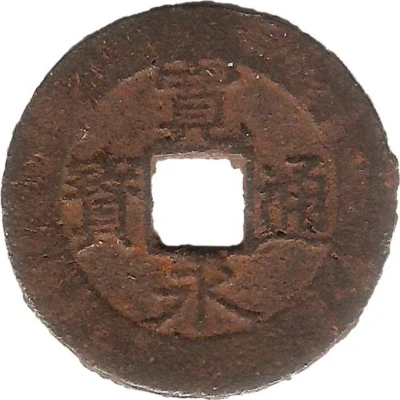
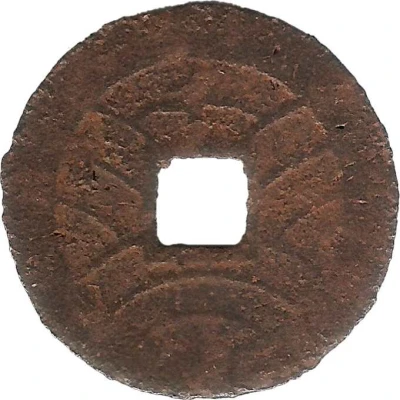

© Sak
4 Mon "Kan'eitsūhō" Iron Alloy; 千 "Sen" reverse ND
1866 year| Iron | 5.30 g | 28 mm |
| Issuer | Japan |
|---|---|
| Type | Standard circulation coin |
| Year | 1866 |
| Value | 4 Mon |
| Currency | Mon (683-1953) |
| Composition | Iron |
| Weight | 5.30 g |
| Diameter | 28 mm |
| Thickness | 1.2 mm |
| Shape | Round with a square hole |
| Technique | Cast |
| Orientation | Medal alignment ↑↑ |
| Demonetized | Yes |
| Updated | 2024-10-05 |
| Numista | N#147416 |
|---|---|
| Rarity index | 87% |
Reverse
11 waves, with mintmark 千 above the hole
Lettering: 千
Edge
Plain
Comment
There is an another mintmark that looks like 千, the イ mintmark.To distinguish them, use the 通 character on obverse:
The 千 mintmark ones tend to have マ as head of 通, while the イ mintmark ones tend to have コ as head of 通.
Interesting fact
One interesting fact about the 4 Mon "Kan'eitsūhō" coin from Japan is that it was made of iron, which was a unusual choice for coinage at the time, as most coins were made of precious metals like gold, silver, or copper. The use of iron in coinage was seen as a way to reduce the cost of production and make currency more accessible to the general population. This coin was also unique in that it featured a reverse design of 千 "Sen" (meaning "thousand") and was part of a series of coins introduced during the Meiji Restoration, a period of rapid modernization and reform in Japan.
